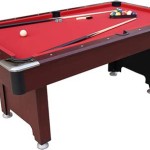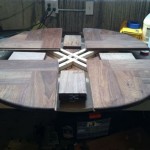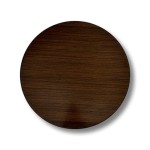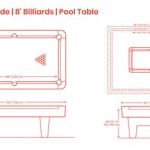The Versatility and Utility of 4-Burner Tabletop Gas Stoves
The 4-burner tabletop gas stove represents a practical and efficient cooking solution for a variety of settings. Its compact design, combined with the power and control of gas cooking, makes it an appealing option for individuals with limited kitchen space, outdoor cooking enthusiasts, and even as a supplementary cooking appliance in larger households. This type of stove offers a balance between portability and cooking capacity, addressing the needs of diverse culinary applications.
Unlike built-in stovetops, tabletop gas stoves offer the flexibility to be moved and stored as needed. This feature is particularly advantageous for those who frequently relocate or have limited counter space. In outdoor settings, such as camping trips or backyard barbecues, a 4-burner tabletop gas stove provides a convenient and reliable cooking surface, allowing for the preparation of meals away from a traditional kitchen.
The functionality of a 4-burner configuration provides ample space for simultaneous cooking. Multiple dishes can be prepared at once, significantly reducing cooking time and streamlining meal preparation. This capability is especially beneficial for individuals who enjoy cooking complex meals or have to prepare food for a larger group.
This article will explore the key features, benefits, and considerations involved in choosing and using a 4-burner tabletop gas stove. It will delve into the various aspects that contribute to its overall performance, safety, and suitability for different cooking needs.
Key Point 1: Design and Construction
The construction of a 4-burner tabletop gas stove is crucial for its durability, stability, and overall performance. Common materials used include stainless steel, cast iron, and enameled steel. Stainless steel is known for its resistance to corrosion and ease of cleaning, making it a popular choice for the stove's body and burner components. Cast iron, often used for the burner grates, provides excellent heat retention and distribution, ensuring even cooking. Enameled steel offers a durable and aesthetically pleasing finish, available in various colors to match different kitchen aesthetics.
The design of the burner assembly plays a vital role in the stove's efficiency and heat output. Burners are typically designed to provide a consistent and adjustable flame, allowing for precise temperature control. Some models feature different burner sizes, catering to various cooking needs, such as simmering delicate sauces or rapidly boiling water.
Tabletop gas stoves typically feature a control panel with individual knobs for each burner. These knobs allow users to easily adjust the flame intensity, providing a range of heat settings to accommodate different cooking requirements. Some models may also include additional features, such as electronic ignition or built-in safety mechanisms.
The support structure of the stove is essential for stability, ensuring that it remains level and secure during use. Rubber feet or adjustable legs are often incorporated into the design to prevent slippage and provide a stable platform on various surfaces. The weight of the stove also contributes to its stability, with heavier models generally being more resistant to tipping.
The overall size and dimensions of the tabletop gas stove are important considerations, especially for those with limited counter space. Compact models are available for smaller kitchens, while larger models offer more cooking surface area. The height of the stove is also a factor, as it should be comfortable to use and not interfere with overhead cabinets or other kitchen fixtures.
Key Point 2: Fuel Source and Compatibility
A primary consideration when choosing a 4-burner tabletop gas stove is the type of fuel it uses. The two main options are propane and natural gas. Propane stoves are generally more portable and require a separate propane tank, making them suitable for outdoor use or locations without a natural gas connection. Natural gas stoves, on the other hand, are designed to be connected to a natural gas line, providing a continuous and readily available fuel source. These are better for permanent indoor installations assuming a gas line is accessible.
The BTU (British Thermal Unit) rating of the burners is a measure of their heat output. Higher BTU ratings indicate greater heating power, allowing for faster cooking times. Different burners on the same stove may have varying BTU ratings to accommodate different cooking needs. For example, a high-powered burner may be used for boiling water, while a lower-powered burner is suitable for simmering sauces.
When using a propane-fueled stove, it's crucial to ensure proper ventilation to prevent the buildup of carbon monoxide. Outdoor use is generally recommended, and indoor use requires adequate ventilation to ensure safety. Natural gas stoves also require proper ventilation, although the risk of carbon monoxide buildup is typically lower due to the existing ventilation systems in most homes.
The connection mechanism for the fuel source is also an important consideration. Propane stoves typically use a regulator and hose to connect to the propane tank, while natural gas stoves require a professional connection to the gas line. It's essential to follow the manufacturer's instructions carefully when connecting the fuel source to ensure a safe and leak-free connection.
Fuel efficiency is another factor to consider. Stoves with high-efficiency burners consume less fuel, reducing operating costs and minimizing environmental impact. Look for models with features such as sealed burners and electronic ignition, which can contribute to improved fuel efficiency.
Key Point 3: Safety Features and Maintenance
Safety is paramount when using any gas appliance, and 4-burner tabletop gas stoves are no exception. Many models incorporate safety features to prevent accidents and ensure safe operation. Flame failure devices (FFDs) are a common safety feature that automatically shuts off the gas supply if the flame is extinguished, preventing gas leaks and potential explosions. Electronic ignition systems eliminate the need for matches or lighters, reducing the risk of burns. Child-resistant knobs can prevent accidental activation of the burners.
Proper ventilation is crucial for preventing the buildup of carbon monoxide, a colorless and odorless gas that can be fatal. When using a gas stove indoors, ensure adequate ventilation by opening windows and using a range hood or exhaust fan. Carbon monoxide detectors should be installed in the vicinity of the stove to provide early warning of any dangerous levels of the gas.
Regular maintenance is essential for ensuring the safe and efficient operation of the stove. Cleaning the burners and grates regularly prevents buildup of food debris and grease, which can affect the flame and reduce efficiency. Check the gas connections periodically for leaks using a soapy water solution. If any leaks are detected, turn off the gas supply immediately and contact a qualified technician.
Proper storage of the stove when not in use is also important. When storing a propane stove, disconnect the propane tank and store it in a well-ventilated area away from sources of heat or ignition. Clean the stove thoroughly before storing it to prevent buildup of food debris and corrosion.
Consulting the manufacturer's instructions is crucial for understanding the specific safety features and maintenance requirements of the particular stove model. Following these instructions carefully can help prevent accidents and ensure the longevity of the appliance.
In addition to these key areas, potential buyers should also consider factors such as warranty coverage, brand reputation, and customer reviews when making their purchase decision. A reputable brand will likely offer better customer support and more reliable products. Reading customer reviews can provide valuable insights into the real-world performance and reliability of the stove.
The design of burner grates plays an important role in stability of pots and pans during cooking. Grates that offer wide support are essential for a safer cooking experience. Also, the spacing between the grates should be carefully considered based on the size of the cookware being used. Uneven heat distribution can result in poorly cooked food and can even cause cookware warping over time.
Ultimately, the best 4-burner tabletop gas stove depends on individual needs and preferences. By carefully considering the design, fuel source, safety features, and maintenance requirements, individuals can choose a stove that provides a safe, reliable, and efficient cooking solution for their specific needs.

Maxi 60 Tabletop 4 Burner Gas Cooker T 840 Buy Your Home Appliances With Warranty

Table Gas Cooker Four Burners

Lg Table Top Gas Cooker 4 Burners Konga Ping

Maxi 4 Burner 3 Gas 1 Electric Manual Ignition Table Top Cooker 411 Lu Gold

60mm Table Top Gas Stove Lotus Flame 4 Burners Stainless Steel Cooking Home Cooker China Xunda And Made In Com

Buy Nasco 4 Burner Table Top Gas Stove Niamapa

Maxi 400 4 Burner Manual Ignition Table Top Gas Cooker Wintx Energy Solar Electronics

4 Burner Table Top Gas Cooker Italian Standard In Ikeja Kitchen Appliances Scolytex Gadgets Jiji Ng
/product/50/9243931/1.jpg?strip=all)
Maxi 4 Burner Table Top Gas Cooker Jumia

Digi Gas Cooker 4 Burner Classic Table Top White Digitech S
Related Posts








